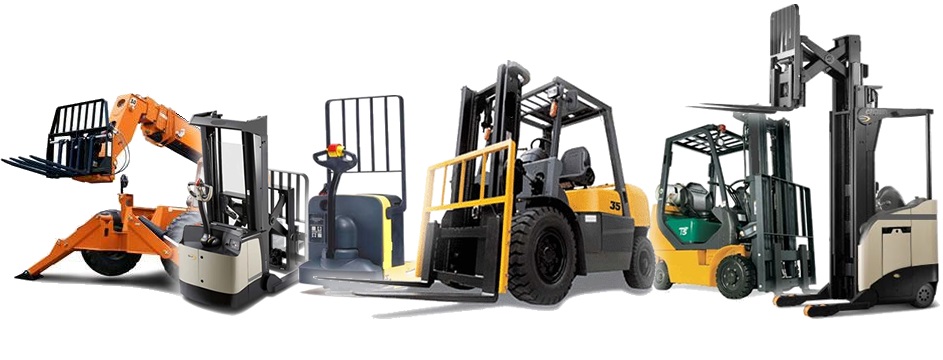Massive MIMO Applications Unlocking New Possibilities for Wireless Networks

Strong 8k brings an ultra-HD IPTV experience to your living room and your pocket.
The emergence of Massive MIMO (Multiple Input, Multiple Output) technology has marked a pivotal moment in the evolution of wireless communication. By using large antenna arrays with hundreds or even thousands of antennas, Massive MIMO can significantly enhance the performance, capacity, and efficiency of wireless networks.
As we progress into the era of 5G and the future of 6G, the applications of Massive MIMO market are unlocking exciting new possibilities for the world of wireless communication. From faster internet speeds to improved connectivity in urban environments, this technology is reshaping how we connect to the digital world.
In this article, we explore the diverse applications of Massive MIMO technology and how it is revolutionizing wireless networks across multiple industries.
1. Enhancing 5G Connectivity
The most immediate and impactful application of Massive MIMO is in the deployment of 5G networks. 5G networks require substantial upgrades in both speed and capacity compared to 4G LTE, and Massive MIMO provides the technology needed to meet these demands. By deploying large antenna arrays on base stations, operators can increase the capacity of wireless networks, allowing them to handle significantly more traffic and offer faster speeds to users.
Massive MIMO's ability to perform beamforming enables targeted signal transmission to users rather than broadcasting signals in all directions, minimizing interference and boosting data rates. In 5G, this capability is crucial for enabling ultra-high-speed downloads, low-latency communication, and a more reliable user experience. Additionally, it supports a larger number of devices connected simultaneously, which is vital as the number of IoT devices and connected applications continues to rise.
2. Improving Connectivity in Dense Urban Environments
One of the key challenges for wireless networks, especially in densely populated areas, is handling high traffic loads while maintaining high-quality service for users. Traditional cellular networks often struggle with congestion and interference in cities, where thousands of devices compete for bandwidth.
Massive MIMO technology helps alleviate these issues by efficiently utilizing available spectrum and focusing the radio signals directly toward specific users. This targeted beamforming reduces interference, optimizes signal strength, and increases the network's capacity, especially in high-density environments like city centers, sports stadiums, or concert venues. As cities become more connected, Massive MIMO will be crucial for ensuring reliable, high-speed connectivity even in the most crowded locations.
3. Enabling Autonomous Vehicles and Smart Cities
Autonomous vehicles (AVs) rely on real-time communication with other vehicles, infrastructure, and cloud-based systems to make split-second decisions. The low-latency, high-capacity capabilities of 5G networks powered by Massive MIMO technology are essential for enabling this type of communication. For AVs to operate safely, they require instantaneous data transfer to navigate and respond to changing conditions.
In the context of smart cities, Massive MIMO will be fundamental in creating a seamless, interconnected urban environment where devices can communicate with each other to enhance efficiency and safety. For instance, traffic lights and road sensors can send real-time information to autonomous vehicles, while smart infrastructure can optimize energy use and reduce congestion. The high-speed, low-latency nature of 5G networks with Massive MIMO enables the smooth operation of these technologies, making cities smarter, safer, and more sustainable.
4. Empowering Industrial IoT (IIoT)
The Industrial Internet of Things (IIoT) refers to the integration of smart devices and sensors into industrial environments such as factories, warehouses, and manufacturing plants. These devices generate massive amounts of data that need to be processed and transmitted quickly to ensure operational efficiency and safety.
Massive MIMO is pivotal in enabling high-speed, reliable communication for IIoT applications. It helps connect large numbers of devices in industrial settings by increasing the capacity and reliability of wireless networks. As manufacturing and industrial operations become more automated, the need for robust, high-capacity wireless networks is paramount. Massive MIMO can handle the demands of real-time data transmission, ensuring smooth operations of automated machines, robotics, and data analytics platforms.
5. Supporting Virtual Reality (VR) and Augmented Reality (AR)
Applications of Virtual Reality (VR) and Augmented Reality (AR) are rapidly expanding across industries such as gaming, healthcare, education, and retail. However, these immersive technologies demand very high bandwidth and ultra-low latency for real-time interaction, especially in multi-user environments.
Massive MIMO technology is key to supporting the high throughput required for VR and AR applications. By offering high-speed wireless connectivity, Massive MIMO can reduce lag, provide clear and continuous data streams, and ensure that VR and AR experiences are seamless and immersive. Whether it’s for remote surgery, 3D gaming, or interactive learning environments, Massive MIMO ensures that users have the fast and reliable connections needed to fully immerse themselves in digital worlds.
6. Enhancing Mobile Broadband for Rural and Remote Areas
A longstanding challenge in wireless communication is providing broadband access to rural and remote areas. Traditional mobile networks often struggle to deliver reliable service to sparsely populated regions due to infrastructure limitations and a lack of available spectrum.
By deploying Massive MIMO technology on small cell networks, operators can extend coverage to underserved areas. Small cells, equipped with Massive MIMO antennas, can provide efficient and high-capacity coverage in remote or rural locations, making broadband and mobile data more accessible. This application is crucial for bridging the digital divide, ensuring that rural and isolated communities have access to the same high-quality connectivity as urban areas.
7. Enabling 6G Networks and Beyond
While 5G networks are still in the process of being deployed, 6G is already on the horizon, with anticipated speeds of up to 100 times faster than 5G. To support such advancements, Massive MIMO will play an even greater role in the development of 6G networks by enabling terahertz (THz) communication. 6G is expected to operate at much higher frequencies, which will require advanced MIMO technologies to overcome challenges related to signal loss, attenuation, and interference.
The high-frequency bands associated with 6G will demand extremely precise beamforming and spatial diversity, which Massive MIMO systems can provide. Moreover, Massive MIMO will support future applications such as tactile internet (remote control of devices with ultra-low latency), holographic communication, and smart holography. As 6G networks evolve, Massive MIMO will be indispensable in delivering the massive throughput and ultra-low latency required for these applications.
8. Optimizing Spectrum Efficiency
One of the significant challenges in wireless communication is efficiently utilizing the available spectrum. Spectrum is a finite resource, and demand for it is growing rapidly with the rise of mobile data, IoT devices, and emerging technologies like 5G and 6G.
Massive MIMO improves spectrum efficiency by enabling spatial multiplexing. This allows multiple data streams to be transmitted simultaneously over the same frequency band by directing them to different locations using beamforming. This spatial reuse of spectrum maximizes the utilization of the available bandwidth, enabling faster data rates and more efficient communication. As the demand for wireless bandwidth increases, Massive MIMO technology will continue to play a crucial role in ensuring that spectrum is used efficiently.
Conclusion: The Future of Wireless Connectivity
The applications of Massive MIMO technology are unlocking a future of faster, more reliable, and more efficient wireless networks. From enabling the high-speed demands of 5G to supporting the IoT, AR/VR, and autonomous vehicles, Massive MIMO is driving innovations that will shape the future of wireless communication. As we look ahead to 6G and beyond, Massive MIMO will continue to be the cornerstone of next-generation wireless infrastructure, providing the scalability, speed, and capacity required to meet the increasing demands of the connected world.
With its transformative applications, Massive MIMO technology is paving the way for a smarter, more connected future, offering unprecedented opportunities for industries, consumers, and communities around the globe.
Note: IndiBlogHub features both user-submitted and editorial content. We do not verify third-party contributions. Read our Disclaimer and Privacy Policyfor details.







